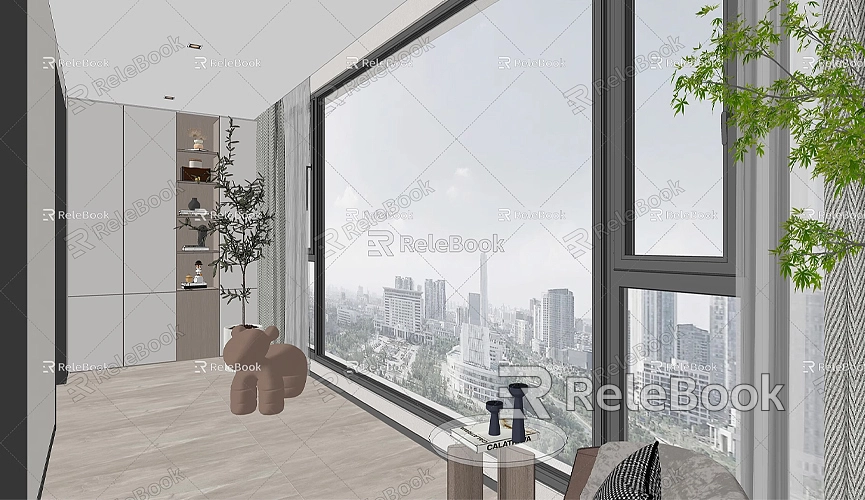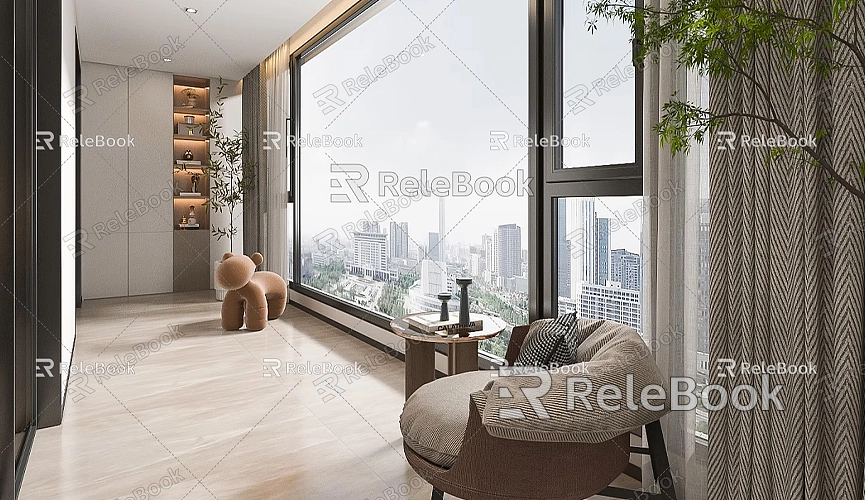How to import sketchup model in maya
In the world of digital modeling and 3D visualization, SketchUp and Maya are two widely used and powerful tools. SketchUp is celebrated for its intuitive interface and robust modeling capabilities, making it a favorite in architecture, interior design, and landscape design. Maya, on the other hand, is renowned for its advanced animation features, simulation effects, and high-quality rendering, and is indispensable in industries like filmmaking, game development, and virtual reality.
When transferring SketchUp models to Maya, designers often face challenges, especially regarding file format conversion and material preservation. This guide will explore how to efficiently import SketchUp models into Maya and offer optimization tips to streamline your workflow and enhance your model's quality in Maya.

File Format Compatibility Between SketchUp and Maya
To successfully import a SketchUp model into Maya, understanding their file format compatibility is crucial. SketchUp's native file format is `.skp`, while Maya uses `.mb` or `.ma` for its native files. Maya cannot directly open `.skp` files, so you’ll need to convert the SketchUp model into a supported format.
Maya supports importing several 3D file formats, including FBX, OBJ, 3DS, and DAE (Collada). Since SketchUp does not directly export Maya-native formats, the most common approach is to export the model as an FBX or OBJ file, as these formats preserve most of the geometric and material data.
Exporting from SketchUp to a Maya-Supported Format
Exporting as FBX
FBX is a widely used 3D file exchange format with robust compatibility in Maya. It retains geometry, materials, textures, and lighting information, making it an ideal choice for most projects.
1. Complete your model in SketchUp.
2. Go to File > Export > 3D Model.
3. Select FBX as the file type.
4. Save the file in a convenient location.
5. During the export process, adjust settings as needed, such as including or excluding model components.
Before exporting, inspect the file to ensure it’s free of unnecessary objects or elements. Excessive details can lead to larger files, which may complicate the importing process.
Exporting as OBJ
OBJ is another commonly used format for 3D model exchange. Unlike FBX, it primarily retains geometry and texture data, making it suitable for static models without animations or complex rigging.
1. In SketchUp, go to File > Export > 3D Model.
2. Choose OBJ as the format.
3. Enable options to export textures or UV maps if available.
OBJ is straightforward but lacks support for animation and advanced scene elements, so if your SketchUp model includes animations or rigs, consider FBX instead.
Exporting as DAE (Collada)

DAE (Collada) is an open 3D exchange format that supports geometry, textures, and materials. Maya can import DAE files relatively easily.
1. In SketchUp, select File > Export > 3D Model.
2. Choose Collada (.dae) as the format.
3. Export the file, ensuring materials and textures are included.
While DAE is compatible, its support for advanced elements like animations and lighting is less comprehensive than FBX. Use it for static models or simpler scenes.
Importing SketchUp Models into Maya
Once you’ve exported the SketchUp model in a supported format like FBX or OBJ, follow these steps to import it into Maya:
1. Open Maya.
2. Navigate to File > Import.
3. Select the exported FBX or OBJ file.
4. Maya will load the file, automatically recognizing its geometry, materials, and textures.
Upon import, Maya may sometimes encounter issues such as missing textures or misaligned UVs. These problems can be fixed during the optimization phase.
Optimizing Imported SketchUp Models in Maya
Reapplying Materials and Textures
While FBX and OBJ files generally retain materials and textures, some information may be lost during import. Use Maya’s Hypershade material editor to reapply or enhance materials.
1. Assign appropriate materials to different parts of the model.
2. Adjust properties like reflection, transparency, and glossiness to achieve the desired look.
3. Check UV mapping to ensure textures align correctly. If not, use Maya’s UV Editor to fix them.
Fixing Normals
Imported models may have incorrect or flipped normals, affecting shading and lighting.
1. Use Maya’s Normals tools to check and fix face orientation.
2. Recalculate or manually adjust normals to ensure proper lighting behavior.
Optimizing Topology
Models imported from SketchUp may have unoptimized topology, such as extra vertices or faces.
1. Use Maya’s Mesh Cleanup tools to merge duplicate vertices and remove unnecessary faces.
2. Simplify the geometry to improve performance, especially for animation or rendering.
Rendering Optimization
Take advantage of Maya’s advanced render engines, such as Arnold or V-Ray, to produce high-quality visuals.
1. Adjust lighting, shadows, and reflections for a realistic appearance.
2. Use Maya’s Viewport 2.0 for real-time preview and refine render settings for the final output.
Additional Tips for Enhancing Workflow
- Leverage Maya’s Animation Tools: Maya offers sophisticated animation features that can breathe life into static SketchUp models. Use tools like keyframing and rigging to create dynamic scenes.
- HDRI for Realistic Lighting: Add high-quality HDRI maps for environment lighting to achieve photorealistic renders.
- Use High-Quality Resources: Access free 3D textures and HDRI maps from platforms like [Relebook Textures](https://textures.relebook.com/) to enhance your designs.
Conclusion
Importing SketchUp models into Maya opens up new creative possibilities, allowing you to harness Maya’s powerful tools for advanced animations, simulations, and high-quality renders. While the process is straightforward, careful optimization ensures your models perform well and look stunning.
By following the steps outlined in this guide, you can efficiently transition from SketchUp to Maya and take full advantage of both tools. Enhance your workflow further by utilizing resources like 3D models and textures from [Relebook](https://3dmodels.relebook.com/).
Mastering this workflow will boost your efficiency, elevate the quality of your projects, and unlock greater creative potential. We hope this guide helps you achieve outstanding results in your 3D design and visualization endeavors!

